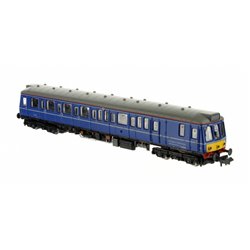There are tens of thousands of decals available covering a multitude of different models from trains, planes and...
No products
Product successfully added to your shopping cart
There are 0 items in your cart. There is 1 item in your cart.
Search Tips
What is a bubble car?
Bubble cars were a single-unit first generation DMU built by British Rail in the late 1950s and 1960. Because they had a cab for the driver at each end, they could be used singularly on lightly used branch lines or coupled to other DMUs or trailing cars to form larger trains. They are particularly popular with modellers due to their short length making them credible options for smaller layouts.
The name 'bubble car' was initially a nickname given to the units by enthusiasts, however, the name was eventually officially adopted by some later operators of the units.
There are two classes of bubble cars (Class 121 and 122) which aesthetically appear similar to each other. However, the class 121s have a head-code box above their centre cab window while the class 122s only have a small destination display.
The Class 122s were the first to be produced by the Gloucester RC&W in 1958. They were put to use mainly on the London - Midland region with a small number finding a home in Scotland operating services between Dundee and Arbroath, the Scottish units were later converted to Class 131 parcels units and enjoyed a prolonged life hauling mail.
The Class 121s were built a couple of years later in 1960 by the Pressed Steel Company. They were put to work on the Western Region and could frequently be seen operating services on Cornish branch lines, Thames Valley services and the Greenford branch in West London.
Class 121s saw regular service right up until 2017 giving them the title of the longest surviving first-generation DMUs in the country. After privatisation, they were utilised on daily services by Silverlink, Arriva Trains Wales and Chiltern Railways. Even today they can occasionally be seen out on the mainline all be it in disguise as Network Rail's departmental Class 960 and no longer on revenue-earning duties.
Click here to receive the tips weekly in your mailbox. You can unsubscribe at any time.









